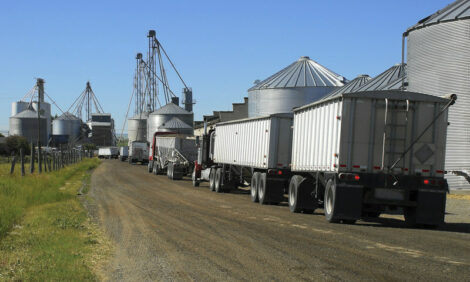



Industries Seek Roadmap for Export Competitiveness
CANADA - If the Canadian pork industry wants to know where the US pork industry is going, watch the US dollar and the energy market, says a leading pork industry economist who spoke at the Banff Pork Seminar, a leading seminar for the pork industry held annually in Banff, Alberta.
Although the US pork industry is in a precarious position, Mr Dermot Hayes, a professor of economics and finance with Iowa State University, says a weakening dollar will help offset this from a trade perspective. "My sense is the US dollar will continue to fall even once we're out of the current economic crisis because the US still has a balance of trade problem," he says. "This should continue to give a small competitive advantage to the US pork industry."
Despite setbacks, the ethanol market will continue to be a decisive factor in the price of feedgrains for both the Canadian and US pork industries, says Hayes, with the Obama administration supporting the ethanol industry as part of its pursuit of energy independence. Also, despite some industry failures, Hayes says existing ethanol production capacity will be used to produce ethanol, driving up the cost of feedgrains in the process.
The ability of the US to continue to sell pork to China, a market that has opened up in recent months due largely to natural disaster, disease and pre-Olympic scarcity, will depend on whether or not the Chinese government allows market forces to operate, says Mr Hayes. "As labour shortages emerge in China, fewer farm families will be willing to produce backyard pigs, a sector that currently produces about half of all the pork produced in China," he says.
"If China responds to this problem by allowing a continuation of imports, then US pork producers might dodge the bullet and export their way out of the problem of increased production. However, if China decides to restrict pork imports despite these economic forces, the US pork industry will need to cut its sow numbers by about three per cent."

Meanwhile, the Canadian pork industry will need to "put skin in the game" by setting up more integrated systems of producing, processing and marketing pork if it is to compete with the US and other pork industries, says Mr Jerry Bouma with Toma & Bouma Management Consultants in Edmonton and lead architect of the Alberta Pork Revitalization Strategy.
With consumer concern over how food is produced and who's producing it at an all-time high, the time for the Canadian pork industry to position Canadian pork as the premium product in the marketplace is now, says Mr Bouma. The challenge, he says, is how the industry is presently organized.
"Canada has a good team with good players, but it takes more than good players to make a winning team. It takes a system with a single vision of objectives and execution among all the players in the value chain. We need a system that links producers and processors together."
Key to this vision is changing how consumers experience pork, particularly fresh pork. Right now, says Mr Bouma, consumers find it difficult to tell Canadian from US pork. This challenge demands an ongoing emphasis on branding efforts. "There's a lot of branding going on right now but we need to go further. We need to take the ball over the line."








